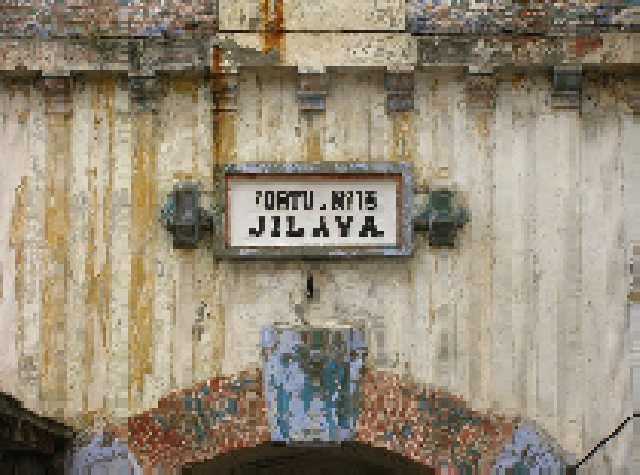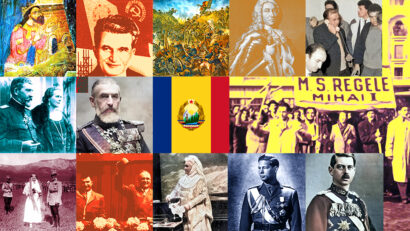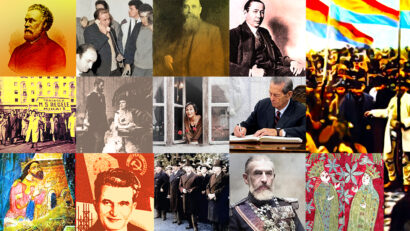The “snake pit” of the Jilava communist prison
Former inmates of the Jilava communist prison recount their horrific detention experiences.

Steliu Lambru, 03.08.2015, 11:00
Jilava Penitentiary was built on the site of Fort 13, which used to form part of a system of fortifications built during the reign of the first king of Romania, Carol I, in late 19th century, to defend the city of Bucharest. To consolidate its rule, the communist government installed by the Soviets in 1945 carried out massive arrests among the democratic opposition and anyone who opposed them.
Jilava became a transit prison where the detainees were interrogated and processed before being sent to other penitentiaries to serve their sentence. The people who were detained in Jilava have dreadful memories of this place. The violent treatment began as soon as they entered the gates of the prison: they had to walk between two lines of guards with clubs, leather thongs or rubber batons that hit them indiscriminately as they walked. Then came the body and clothing search. They were then put into overcrowded cells, some of them holding up of 200 people, where they were introduced to the “snake pit, the place between the floor and the line of bunks, where they were supposed to sleep, which hardly qualifies as a place of rest. It was called the “snake pit because of the way in which you had to crawl to get in there.
Constantin Ion was a high school student in 1949, when he was arrested. He was in a student organisation that printed and distributed anti-communist fliers. His recollections of the time he spent in Jilava were recorded by Radio Romanias Centre for Oral History in 2000:
“I remember they put me in a room in Jilava with 160 others during the summer months, June, July and August. I remember those bunks, the shelves we were supposed to sleep on. We lied on them crammed into each other, so tight that we could only turn all at once. The rule was that the latest arrivals would sleep in the snake pit, on the cement floor. In that room, so cramped, even though we werent fed much, and it was just a tepid weak soup, you still had to use the toilet. We had a wooden bucket that eventually filled and spilled its contents on the floor. Many of us even had to sleep in urine. There was an epidemic of boils among us, and the people who were sleeping on the bunks, during the night, tired and tormented, fell on top of the people on the floor, who were also infested with all sorts of things. They cried out, it hurt when someone fell on top of you.
Alexandru Marinescu of Nucsoara was arrested in 1949 for owning guns. Nucsoara was at the core of the most famous anti-communist resistance group, known as the Arsenescu-Arnautoiu group. Marinescu was a high school student at the time. He also has a vivid recollection of what it was like to sleep in the “snake pit:
“You slept under the bunk, and in the winter of 1950 or 1951, there were often 15 or 20 people who could not find room to lie down. You couldnt fit a needle in there. These people, the 15 or 20 people who didnt have room to sleep, gathered on one side of the room clumped together. When the guards changed, we would wake up another group of 15 or 20 people and swap places with them so that we could also get some sleep. There was no such thing as a mattress, there were no blankets, no bed sheets, just the naked wood. In some of the rooms they sometimes had some raggedy floor spreads. Our hips were like a draft oxs neck, blackened and horny, a scaly layer of skin. The rule in each room was that if you were new to the room, even if you came from another prison with 5 or 10 years behind it, you were still considered the newcomer. The new person would start with the worst conditions there were, the worst place to sleep. After I came to the room, there was a period of time when they were bringing in less people, so I had room to sleep, next to the slop bucket. If I slept on the right side, I slept facing the bucket, and in the night you risked being sprayed on the face by the ones using the bucket. So I was sleeping on the left side, with my back to the bucket, straight on the concrete.
Ion Preda, who was arrested in 1949 for providing food to the Arnautoiu group, tells a similar story from the “snake pit:
“They put us into the ‘snake pit, and there was no place to lay your head. We put our boots under our heads, we had no covers, nothing, not even a floor spread. We slept straight on the cement. Some people had eczemas all over, others couldnt breathe, or had swollen eyes… and we only had a tiny window. When it got too rowdy in the cell, the guard used to close the window as punishment. We ran out of air, we were smothering. And they left us like that for about half an hour, then opened the window. Thats what was happening at Jilava.
The “snake pit was just one of many constant humiliations that dehumanised the inmates, crushing their respect for self and others.





























